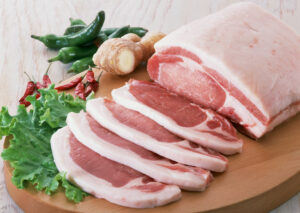
Purchase prices for live pigs next week (December 8-14, 2025) will decrease and amount to 70-71 hryvnia/kg (-5.4%) compared to 74-75 hryvnia/kg this week, according to the Meat Industry Association.
Experts noted that the decline in purchase prices for pork is occurring against the backdrop of growing epizootic pressure in both Ukraine and Europe.
The first outbreak of ASF in Spain in 30 years and the blocking of some of its export certificates have shown that ASF is no longer a local problem but has become a continental threat capable of influencing market expectations and regulatory decisions throughout Europe, the industry association stressed.
“For Ukraine, the main driver of price pressure remains the internal situation — an increase in the number of outbreaks and forced sales of livestock, which creates excess supply,” the association explained.
It cited data on European countries and noted that on the German VEZG exchange, experts forecast prices for half-carcasses of standard pigs at EUR1.60 per kg (78.75 UAH/kg excluding VAT) for the coming week, and EUR 0.80 per kg (UAH 39.38/kg excluding VAT) for half-carcasses of sows. On the Polish exchange CennikRolnicze, the average price for live pigs is PLN 4.61/kg (UAH 53.48/kg). The price range for live pigs is PLN 4.00-5.50/kg (UAH 46.4-63.8/kg).
“Pork from Ukraine could take its place in the global market and stimulate the development of the meat industry and pig farming in Ukraine,” the industry association concluded.
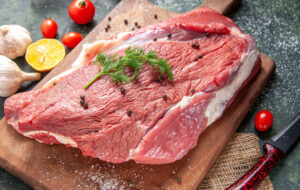
In January-October 2025, Ukraine imported 24,295 tons of pork worth $61.554 million, which is 11.5 times (2,120 tons) more than in the same period of 2024, according to statistics from the State Customs Service.
According to the published statistics, the top three suppliers of pork to Ukraine during the reporting period were Denmark, which accounted for 58.62% of supplies worth $36.08 million, Poland (18.29%, $11.26 million), and the Netherlands (8.54%, $5.26 million).
At the same time, pork exports for the first 10 months of this year amounted to 2,152 thousand tons worth $6.42 million, which is 15.7% (2,554 thousand tons) less than in the same period last year.
In addition, Ukraine increased imports of lard, pork fat, and poultry fat by 28.9% in January-October, to 15,672 tons worth $18.085 million.
The top three suppliers of lard to Ukraine in 2025 were Poland (66.86%, $12.091 million), Germany (12.92%, $2.337 million), and Spain (9.79%, $1.886 million).

Imports of chilled and frozen pork (UKT ZED 0203) exceeded 6,000 tons in September, which is 31% more than a month earlier and is the highest figure since January 2022, according to the Ukrainian Pig Farmers Association (ASU).
“Unlike last year, foreign supplies in 2025 picked up significantly in response to weaker domestic pork supply and higher prices, and in the second half of the year, average monthly imports of pork from abroad reached 2022 levels. At the same time, importers did not exceed the record figure of 6.6 thousand tons recorded in January 2022,” the industry association noted.
According to analysts, the stimulus for increased import activity was both high prices for Ukrainian pork and the exhaustion of quotas for duty-free pork supplies from the EU.
“Since this year’s seasonal decline in domestic pork supply coincided with the effects of a reduction in the country’s pig population, prices for Ukrainian pork are significantly higher and have remained at a consistently high level for a long time. In contrast, the average customs value of imported pork in September fell to $2.56 per kg (-2.2% compared to August). Since the vast majority of such products come from EU countries, the exhaustion of quotas for duty-free imports encouraged some operators to build up stocks of products before the forced “price increase” due to customs tariffs,” the experts explained.
The ASU stated that in the first three quarters of 2025, Ukraine imported 20.8 thousand tons of chilled and frozen pork (UKT ZED 0203) worth $53.2 million, of which only 142 tons were imported from Canada, while the rest of the consignments were imported from the EU. Therefore, further imports of pork from there will be subject to import duties: chilled — 12%, frozen — 10%.
At the same time, a number of importers are convinced that duties will not stop the flow of pork as long as it is economically justified.
“European pork prices have been weakening since the beginning of July and fell by 6% in September due to seasonal changes, increased domestic supply, and difficulties with foreign trade, in particular, China’s introduction of 62% duties on pork imports from EU countries. Therefore, according to some operators, the price pressure from these factors may offset the aforementioned increase in import costs,” the association emphasized.
At the same time, other players are convinced that against the backdrop of a significant reduction in domestic pork supply in Ukraine compared to last year, the pressure on prices from imports and the impact on the market will not be too critical. Thus, if the pace of supplies remains at the level of the third quarter of this year, the total annual imports of pork will not exceed 35,000 tons. In this case, it will account for no more than 5-6% of the estimated domestic supply of pork, which is a quarter less than in 2022 and 15% less than in 2021. Therefore, the vast majority of pork on the domestic market continues to be supplied by Ukrainian producers.
Higher prices on the domestic pork market somewhat slowed down the shipment of Ukrainian pork abroad in August and September, but the total export volume for the first nine months of the year exceeded 2,000 tons, amounting to almost $6.2 million. The key trading destinations remain Hong Kong, the UAE, Bahrain, and Malaysia, but businesses and government agencies are actively working together to open up a number of new markets, including the Philippines, Vietnam, Singapore, South Korea, and others,” summarized the Ukrainian Pig Farmers Association.
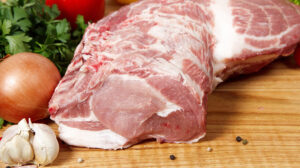
Ukraine has seen a significant increase in imports of fresh and frozen pork. In August 2025, 4.6 thousand tons of meat were imported, which is 48% more than in July, according to the Ukrainian Agribusiness Club (UAC).
The association’s analysts noted that in January-August 2025, Ukraine imported 14.9 thousand tons of pork, which is 7.8 times more than in the same period of 2024, the highest figure since 2022.
The largest purchases were observed in July and August, totaling 7.7 thousand tons. In the first two weeks of September, another 3.2 thousand tons were imported. Experts predict that by the end of the year, purchases will reach at least 25,000 tons, with the majority of deliveries occurring in the second half of the year.
The main suppliers of pork to Ukraine are Denmark, Poland, and the Netherlands.
“The main reason for active imports was the reduction of the pig population in winter to 4.5 million heads, mainly in private households. This led to a shortage of supply in the domestic market and an increase in prices,” explained UACB analyst Maxim Gopka.
According to UACB data, in September, purchase prices for live weight of bacon breeds of pigs ranged from 98 to 100 UAH/kg, depending on the region. Since the beginning of the year, prices have risen by 34%, and by 60% on an annual basis.
Analysts noted that there has been a decline in the cost of live pigs in the EU, which makes their markets attractive for Ukrainian purchases. Thus, imports have become an alternative source of raw materials.
It is likely that a reduction in imports will only be possible through a gradual increase in the pig population, which in the long term will also affect domestic purchase prices. According to the State Statistics Service, as of September 1, 2025, there were 4.8 million pigs in Ukraine, which is 5% less than last year but 7% more than in January. Despite an increase of 330,000 head since the beginning of the year, market supply remains limited. The recovery is mainly taking place in the enterprise sector, which currently accounts for 65% of the livestock population, according to the UCAAB.
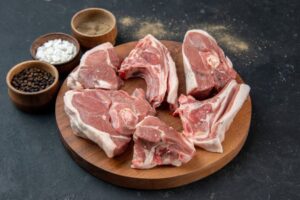
Average food prices in Ukraine in July 2025 increased by 2.8% compared to January, with rye flour and pork leading the way, rising by 29.9% and 26.1% respectively, according to the State Statistics Service (Derzhstat).
According to the agency, beef rose by 12.5% to 178.75 UAH/kg, pork by 26.1% to 140.29 UAH/kg, and poultry by 19.9% to 89.33 UAH/kg during the reporting period.
Meat products lag slightly behind in terms of price increases. Cooked sausages, sausages, and frankfurters rose in price by 9.3% over seven months and cost an average of 143.9 UAH/kg, while semi-smoked sausages in July could be purchased for an average of 181.79 UAH/kg, which is 7.4% more than in January.
Unrefined sunflower oil rose in price by 1.5% to 47.09 UAH/kg, and refined sunflower oil rose by 3.6% to 57.77 UAH/kg.
Sugar rose in price by 6.3% over the first seven months of this year and currently costs 21.49 UAH/kg.
Wheat and wheat-rye flour rose in price by 2.6% in July compared to January and costs 12.81 thousand UAH/t, while rye is hitting record highs, rising by 29.9% to 13.68 thousand UAH/t.
Accordingly, wheat bread rose in price by 5.1% to 35.51 UAH/kg, and rye-wheat bread by 7.2% to 33.68 UAH/kg. Prices for rye bread rose by 13.8% over seven months, reaching 50.63 UAH/kg. Gingerbread, cookies, and waffles added 6.9% in price and cost an average of 85.96 UAH/kg. The slowest growth in this product category was seen in pasta and noodles, which rose by 1.5% to 25.94 UAH/kg.
Buckwheat fell in price by 3.2% over the first seven months of this year, to UAH 23.72/kg, and millet by 2.4%, to UAH 15.63/kg.
From January to July inclusive, milk (by 4.8%, to 33.4 UAH/kg), butter (by 0.8%, to 307.41 UAH/kg), hard cheese (by 2.6%, to 226.83 UAH/kg), sour cream (by 1.1%, to 99.11 UAH/kg). At the same time, skimmed milk powder rose by 4.8% to 103.04 UAH/kg, and kefir rose by 1.2% to 38.77 UAH/kg.
In the alcoholic beverages segment, from January to July, denatured alcohol rose in price by 7.2% and costs 330.05 UAH/liter, beer rose by 3.9% to 31.26 UAH/liter, while brandy fell in price by 0.1% to 146.89 UAH/liter, and vodka fell by 2.6% to 76.3 UAH/liter.
Non-alcoholic beverages rose in price by 6.4% over seven months, to 21.65 UAH/liter.
Tomato juice remains the most affordable for Ukrainian consumers. In July 2025, it costs 40.53 UAH/liter, which is 2.4% more than in January, while orange juice rose in price by 9.2% and can be purchased for 61.27 UAH/liter. Apple juice became the most expensive at 71.16 UAH/liter, which is 7.6% more than at the beginning of 2025.
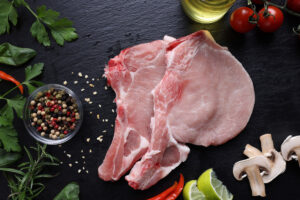
Purchasing prices for pork remained relatively stable at the beginning of June, at 92-94 UAH/ton, according to the Ukrainian Pig Farmers Association (ASU) based on the results of its weekly monitoring of purchasing prices.
“The first summer trades ended with stable quotations for most operators or a slight correction of 0.5-1 UAH/kg for some market players. Therefore, prices for live pigs this week mostly fluctuated within the range of 92-94 UAH/kg, although there were both higher and lower offers. The latter, in particular, concern the sale of animals in poor condition,” the analysts explained.
According to their information, thanks to positive price changes in the east and south, where the shortage of live cattle is more acute, the average market price stood at 92.8 UAH/kg, which is 0.3% higher than a week earlier.
At the same time, experts noted that the green holidays passed almost unnoticed for the meat market. Therefore, meat processors do not expect a surge in consumer activity in the near future. Some of them hope that improved weather conditions and the approaching holiday season will revive trade and prevent refusals/returns at the final stage of sales.
At the same time, processors are preparing for increased pressure from seasonal factors on pork supply. Although the feedback and mood of processing companies currently vary, most tend to believe that purchase prices at upcoming auctions will remain unchanged, as consistently low sales are offset by a modest supply of live pigs, the industry association concluded.